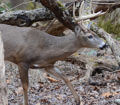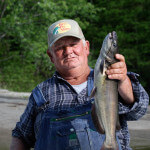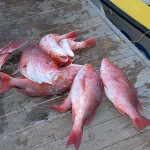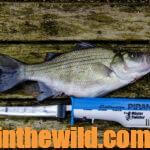Editor’s Note: Simply finding a deer trail won’t provide enough information to hang a tree stand and plan to hunt that trail. Many ingredients make some deer trails better than others. To effectively hunt trails, you need to know:
* why and when the deer use the trail;
* where the deer will go; and
* what time of day or night the deer will move down the trail.
 With this information, you can hunt trails and take deer more productively than a hunter who simply finds a trail and hangs a tree stand. Let’s take a closer look at some different types of deer trails, and what you can learn from these trails to help you hunt deer more effectively.
With this information, you can hunt trails and take deer more productively than a hunter who simply finds a trail and hangs a tree stand. Let’s take a closer look at some different types of deer trails, and what you can learn from these trails to help you hunt deer more effectively.
You can locate and read some deer trails easily. Most hunters hunt and spook deer on these public-land trails. Deer often use these trails at night, leaving plenty of signs, but never travel them during daylight hours. However, you’ll usually find the most deer on invisible trails – the kind of trails that only veteran woodsmen will pinpoint.
“Deer have historical trails that they’ve used for generations to travel from one woodlot to another,” Larry Norton of Butler, Alabama, a longtime, avid deer hunter and guide, explains. “Even when deer encounter a clear-cut, they still will use these same trails. But as the young pines grow to 4-5-feet tall, the trails seem to vanish. However, mark these trails, so that you can find them as the pines continue to grow. The deer never will stop using the trails.”
Norton remains very secretive about the invisible trails in pine plantations he hunts. He tries to enter and exit these areas without anyone’s noticing him. He also never tells other hunters where or how he hunts. “I’ll never hunt a historic trail in a pine plantation with a wrong wind. I don’t want to spook the deer on these trails. And, I don’t hunt these trails more than once per week.”
Norton also finds and hunts other invisible trails – trash trails – in pine plantations. Usually on a clear-cut property, the stumps, limbs and logs are left piled-up in a long windrow and burned. However, the windrows still remain after the landowner plants the region in pines. As the young pines grow taller than the windrows, you no longer can spot these old trash piles. According to Norton, “The trash piles create a natural barrier on what would otherwise be flat ground. These trails are primarily travel and feeding trails for deer and usually have very-fertile earth that produces high-quality deer food like honeysuckle, blackberry bushes and greenbrier. The deer can feed on the trash piles and stay in thick cover during daylight hours. Most often you’ll have to hunt these trash piles from ground blinds, since a young pine can’t hold a tree stand. The understory only may be clear for 5-6 feet above the ground.”
 To learn more about hunting deer with John E. Phillips’ Amazon Kindle eBooks, print books and Audible books (the latest Audible is “How to Hunt Deer Like a Pro”) and Nook books, click here at https://johninthewild.com/books/#deer. You can type in the name of the book and download it to your Kindle, and/or download a Kindle app for your iPad, SmartPhone or computer. For a free download on how to make jerky from venison to provide a protein-rich snack, choose “How to Prepare Venison Jerky: The Ultimate Snack Food” at johninthewild.com/free-books.
To learn more about hunting deer with John E. Phillips’ Amazon Kindle eBooks, print books and Audible books (the latest Audible is “How to Hunt Deer Like a Pro”) and Nook books, click here at https://johninthewild.com/books/#deer. You can type in the name of the book and download it to your Kindle, and/or download a Kindle app for your iPad, SmartPhone or computer. For a free download on how to make jerky from venison to provide a protein-rich snack, choose “How to Prepare Venison Jerky: The Ultimate Snack Food” at johninthewild.com/free-books.











